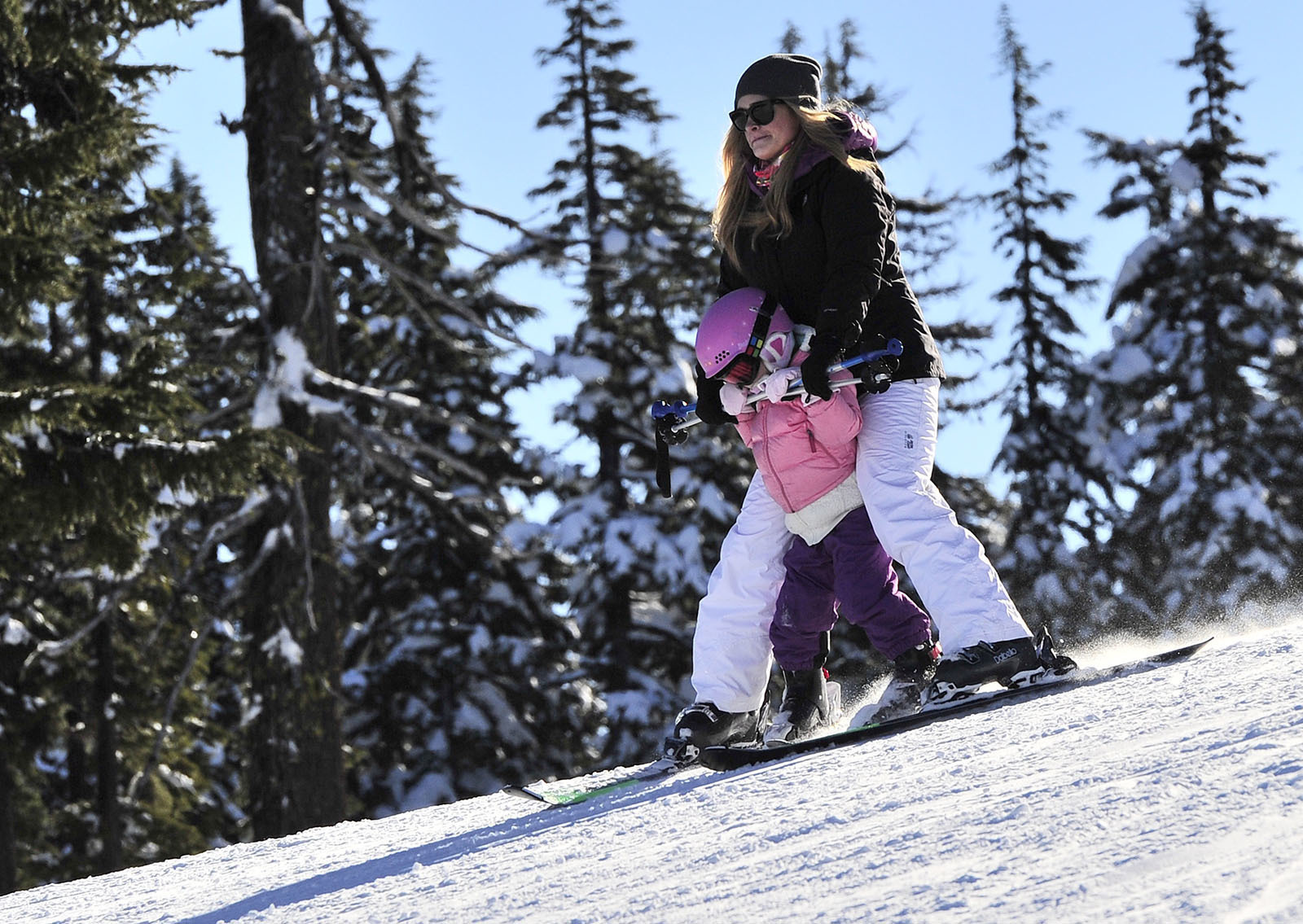MOUNT BACHELOR, Ore. (AP) — Mason needed a nudge, so I did what parents often do and resorted to bribery.
“Mason, if you come ski Cloudchaser with me, I’ll buy you a root beer float at Cascade Lakes after,” I told him.
“Fine,” was the stubborn response from my 8-year-old son.
So we skied over to the new Cloudchaser chairlift on our outing to Mt. Bachelor ski area last month. Mason was all smiles as we explored the new terrain, and he declared the area his new favorite part of the mountain.
This, after refusing all morning to try something new.
Confidence is a significant part of what helps kids progress with activities like skiing and snowboarding. But I wondered as a parent how I could keep my son improving his skills on the hill after his five lessons last season.
When he was really young, maybe 4, I took him to the Carrousel chairlift, a small lift for beginners near the Sunrise Lodge at Bachelor. But he refused to let go of me as I held him between my legs while turning down the hill, and thus it seemed he did not learn much.
I knew he needed to learn from somebody else.
So last year, when Mason was 7, my wife and I registered him for Bachelor’s “Ski or Ride in 5” program for beginner skiers and snowboarders.
His progression amazed me. By the spring, he was skiing off the Summit chairlift with me.
“We hear a lot that, ‘My kids won’t listen to me but they’ll listen to somebody else,’” says Jason Montoya, director of activities at Mt. Bachelor. “That gives them the chance to learn from somebody that has the knowledge and skills to allow them to learn that foundation from the bottom up.”
Instructors also try to promote independence, so parents hanging on to their kids as they slide down the mountain might not really be in the child’s best interest, Montoya says. Instructors want to ensure that skiers and boarders have the skills necessary to ride new terrain independently.
“Just having them build that foundation and working toward that next step,” the director says.
“It’s a balance, but we won’t take them to the next chair (in skill level) until they’re able to do it independently.”
Montoya explains that instructors evaluate youngsters’ skiing by how they are skiing and not by the terrain they have skied or the chairlifts they have ridden.
So me bragging about my son’s skiing in the areas of Cloudchaser and Summit does not mean much if he is not skiing technically sound. And this season it has been a challenge to get him out of his wedge — “make a pizza” is what we call it — and straighten out his skis as he turns down the slopes.
Montoya notes that this a common problem with young skiers after their first season of lessons.
“That’s one of the bigger challenges that we encounter, because that’s where they’re comfortable and what they know,” he says. “Work on it on terrain they they’re comfortable with. There’s a variety of different drills we use.”
Traversing along the runs — moving straight across the runs back and forth — on easier terrain can help, according to Montoya. Also, a practice called “thumper” — thumping the uphill ski while skiing across the run — will force skiers to balance on their downhill ski and thus straighten out their skis.
I plan to employ these drills next time on the mountain with Mason, with a minimal amount of bribery.
Montoya says that skiing and snowboarding students, like most any students, will learn in different ways. Some just need to be told what to do. Others need to see how to do it.
“We try to tell them, show them, and have them practice it,” Montoya says. “Having them watch you might be more effective than telling them.”
He adds that it is probably time for more lessons when they want to feel more comfortable on more advanced terrain or learn a new skill — for example, learning how to ski powder off of a groomed run.
“But getting out there and just skiing is just as important as instruction,” Montoya insists.
Another question I posed to Montoya is how to know when your child is ready to ride the mountain with friends without parental supervision.
This is obviously a personal choice for every parent, and I start to sweat when I think about it.
Along with possessing the skiing or snowboarding skills necessary to venture off without an adult come other issues, including lift riding and safety awareness. Will your child know what to do if someone gets injured or they get separated from their friends?
“Educate them and know they’re independent in navigating the mountain,” Montoya suggests. “Tell them to ski on the runs, stay with friends, and make sure they stop regularly to ensure their friend is still with them. But even at 13 years old, it really bugs me when my son doesn’t answer his phone.”
I don’t have to worry about that just yet.
This season my 6-year-old daughter is in the Ski or Ride in 5 program. Before I know it, she and her brother will be off skiing without me.
I might as well enjoy this time while it lasts. But I also want to make sure I am teaching them the right skills and giving them the best advice for a lifetime of skiing.

